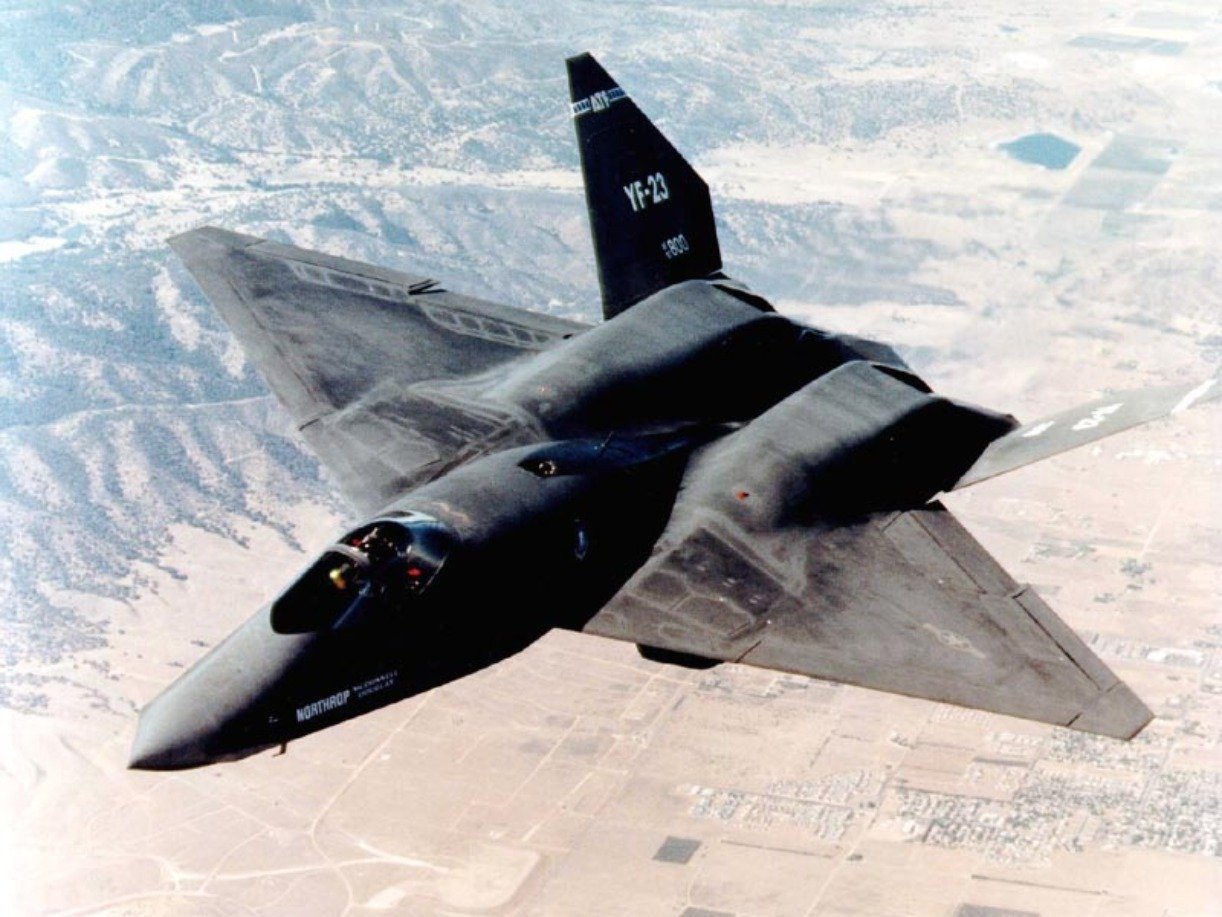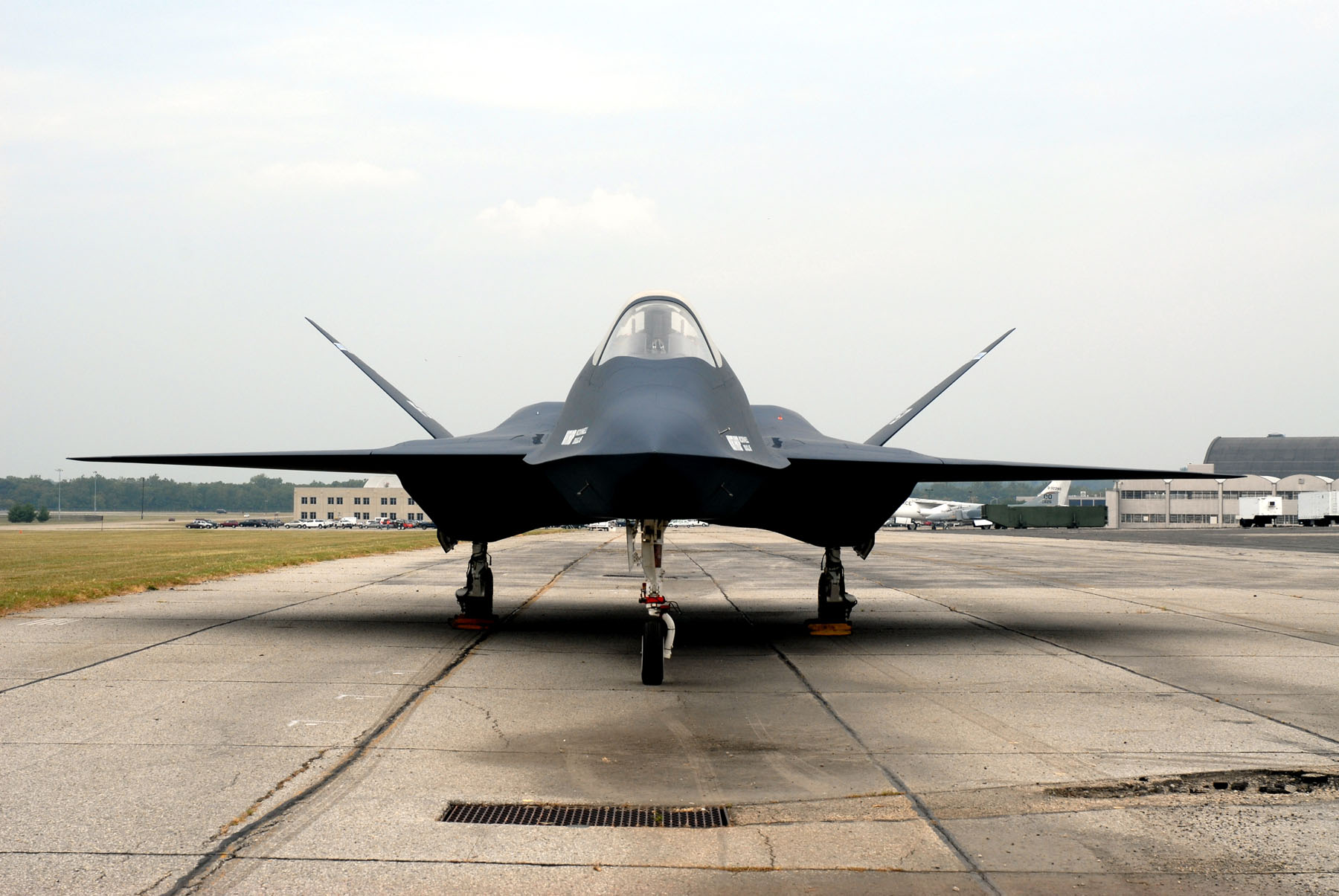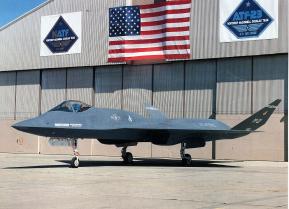YF-23: The Stealth Fighter The U.S. Air Force Almost Built
Yet despite the YF-23’s performance bona fides, the jet was passed over – in large part, not because of the jet’s performance, but because of how the performance was marketed.
Meet the YF-23: During the 1980s, while the Cold War was peaking and the US was fervently investing in weapons technology sufficient to maintain an edge over the Soviets, the US Air Force began looking ahead to the fifth generation of fighter jets. While the fourth generation – venerable fighters like the F-15 and F-16 – was barely a decade old, the US respected Soviet aerospace designers and thus felt an incentive to keep innovating.
In retrospect, we know that in the 1980s, the Soviet Union was on the verge of collapsing.
But at the time, the US was convinced they were still locked in a death match with the Red Empire. And the Soviets, despite being hollowed out and over-extended, were rolling out impressive new jets, like the Su-27 and the MiG-29 – suggesting to American intelligence agencies that the Soviet military-industrial complex was still humming along.
So, the US set about to create something the Soviets wouldn’t be able to match.
YF-23: Something New
The USAF had an idea of what air combat would look like in the future – and they wanted their next batch of fighters to incorporate technologies that would be well suited to the future envisioned.
First and foremost, designers wanted the new jet to incorporate stealth. At the time, the US was already producing stealth aircraft – the F-117 Nighthawk nd the B-2 Spirit – but did not have a fighter aircraft with stealth technology.
To be clear: the F-117 was given the Fighter (‘F’) designation but in reality would have more appropriately been designed an Attack (‘A’) aircraft. And second, the USAF wanted their new jet to incorporate supercruise technology – which allows an aircraft to gain and maintain supersonic speed without the use of afterburners.
The benefit of supercruise is that it allows a fighter to achieve speeds sufficient to catch enemy fighters, while leaving enough fuel in reserve to allow for Air Combat Maneuvers (ACM), more commonly known as dogfighting.
To develop a new fighter incorporating stealth and supercruise, the USAF solicited bids for a lucrative new contract: the Advanced Tactical Fighter (ATF). Northrop and Lockheed each entered a bid for the ATF program, which at the time was expected to yield about 750 units – meaning the contract would not just be not just prestigious, but extremely lucrative.
What Could Have Been
Lockheed won the ATF bid with a prototype that has gone on to become the F-22 Raptor – the world’s first operational fifth-generation fighter. But Northrop’s ATF bid, despite fading into the annals of aviation history, was similarly remarkable and deserves to be remembered.
In an effort to win the ATF contract, Northrop entered their YF-23 prototype. The YF-23 looked like something straight from a science-fiction thriller, something starring Michael Biehn or Sigourney Weaver. The YF-23 had a distinctive trapezoidal wing, a pushed-forward cockpit, a drooping, duckbill-shaped nose, and a V-shaped tail.
Only two YF-23s were ever built – making them something of an aviation cult phenomenon. The first YF-23 produced, nicknamed Black Widow II, used two Pratt & Whitney engines that enabled supercruise at Mach 1.43. Some adjustments were made for the second YF-23 produced, nicknamed Grey Ghost, which used two General Electric YF120 engines. The Grey Ghost offered an improvement over its predecessor’s speed (and Lockheed’s F-22), hitting Mach 1.6 in supercruise.

However, the YF-22 outperformed the YF-23 with respect to maneuverability – no doubt because the YF-22 was equipped with thrust vectoring technology whereas the YF-23 relied upon conventional maneuvering technology. Thrust vectoring allows a pilot to adjust the angle of the thrust outlet, which improves maneuverability. Northrop made a calculated decision to omit thrust vectoring technology from the YF-23 because they did not want to compromise the jet’s stealth profile.
Accordingly, the YF-23 did have better stealth performance than the YF-22. While the ATF evaluators were impressed with the YF-22’s maneuverability, Northrop’s decision to prioritize stealth over maneuverability now seems prescient given the increased importance of stealth, and the decreased importance of maneuverability, in modern air combat. Indeed, as dogfighting becomes increasingly rare, as air-to-air missile technology improves, and as airspace becomes increasingly contested – maneuverability doesn’t mean what it used to.
Stealth wasn’t the only realm in which the YF-23 outperformed the YF-22; the YF-23 also won head-to-head competitions in overall range -- a helpful metric for conflict with Russia or China.

Yet despite the YF-23’s performance bona fides, the jet was passed over – in large part, not because of the jet’s performance, but because of how the performance was marketed. Lockheed simply did a better job of showing what their jet could do during the ATF trials, operating at high angles of attack, firing missiles, pulling maneuvers at 9Gs. The Lockheed team dazzled their evaluators, whereas Northrop played it relatively safe.
Could the YF-23 have kept up? Probably. But we’ll never know.
Harrison Kass is a prolific defense writer with over 1,000 articles published on many national security issues. An attorney, pilot, guitarist, and minor pro hockey player, Harrison joined the US Air Force as a Pilot Trainee but was medically discharged. Harrison holds a BA from Lake Forest College, a JD from the University of Oregon, and an MA from New York University. Harrison listens to Dokken.
Image Credit: All Images are Creative Commons.


